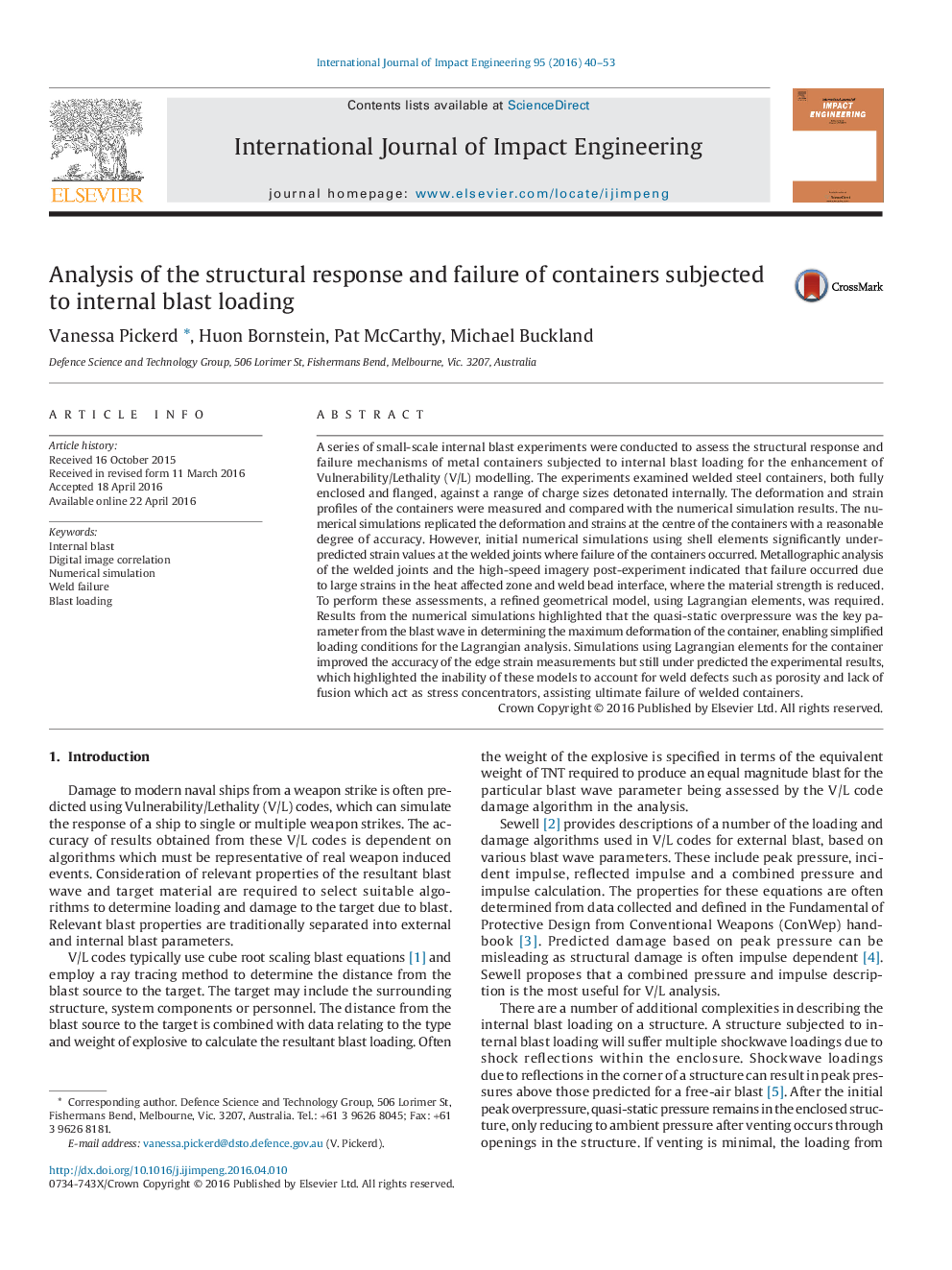| کد مقاله | کد نشریه | سال انتشار | مقاله انگلیسی | نسخه تمام متن |
|---|---|---|---|---|
| 776302 | 1464056 | 2016 | 14 صفحه PDF | دانلود رایگان |
• Internal blast experiments were conducted on welded steel containers using digital image correlation to assess the deformation and strain.
• Micrographs of the containers post event indicated that failure occurred at the weld bead/HAZ interface.
• Numerical simulations were able to capture the deformation accurately and identify regions of high strain.
• Weld defects such as porosity and lack of fusion result in highly localised regions of strain that are not accounted for in the simulations.
A series of small-scale internal blast experiments were conducted to assess the structural response and failure mechanisms of metal containers subjected to internal blast loading for the enhancement of Vulnerability/Lethality (V/L) modelling. The experiments examined welded steel containers, both fully enclosed and flanged, against a range of charge sizes detonated internally. The deformation and strain profiles of the containers were measured and compared with the numerical simulation results. The numerical simulations replicated the deformation and strains at the centre of the containers with a reasonable degree of accuracy. However, initial numerical simulations using shell elements significantly under-predicted strain values at the welded joints where failure of the containers occurred. Metallographic analysis of the welded joints and the high-speed imagery post-experiment indicated that failure occurred due to large strains in the heat affected zone and weld bead interface, where the material strength is reduced. To perform these assessments, a refined geometrical model, using Lagrangian elements, was required. Results from the numerical simulations highlighted that the quasi-static overpressure was the key parameter from the blast wave in determining the maximum deformation of the container, enabling simplified loading conditions for the Lagrangian analysis. Simulations using Lagrangian elements for the container improved the accuracy of the edge strain measurements but still under predicted the experimental results, which highlighted the inability of these models to account for weld defects such as porosity and lack of fusion which act as stress concentrators, assisting ultimate failure of welded containers.
Journal: International Journal of Impact Engineering - Volume 95, September 2016, Pages 40–53
